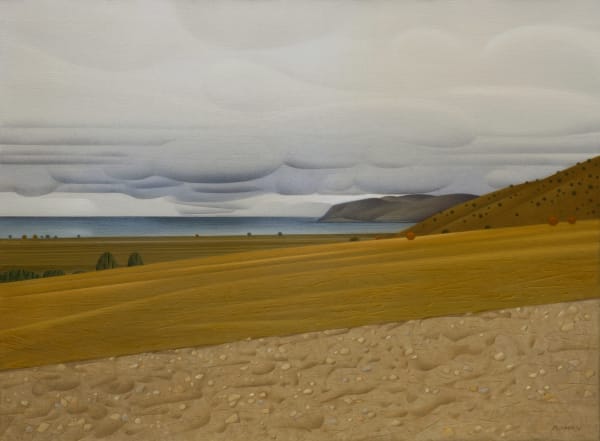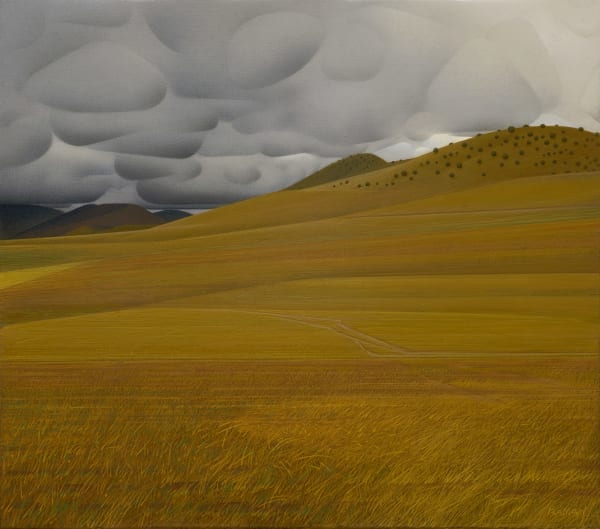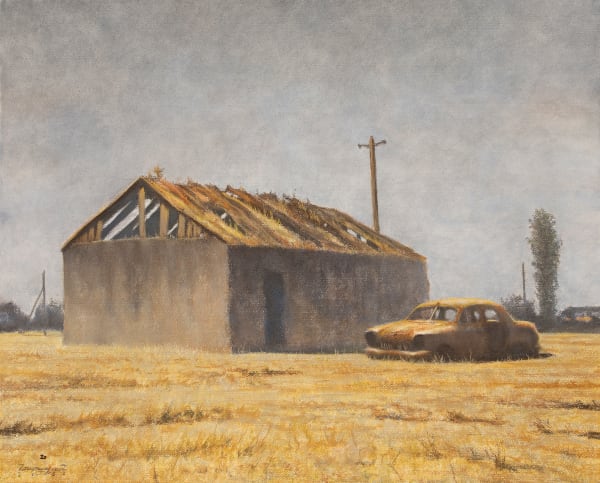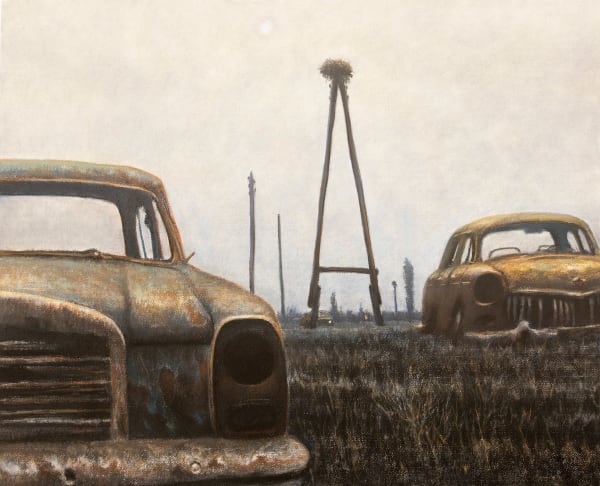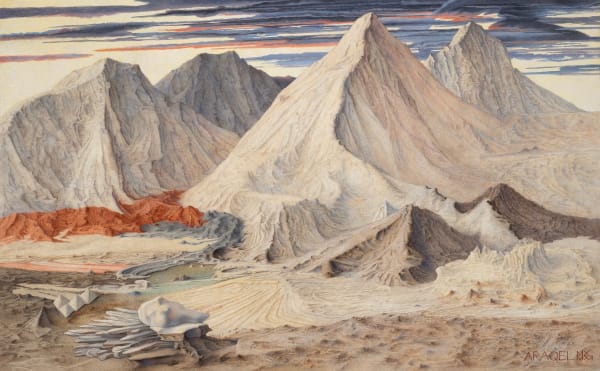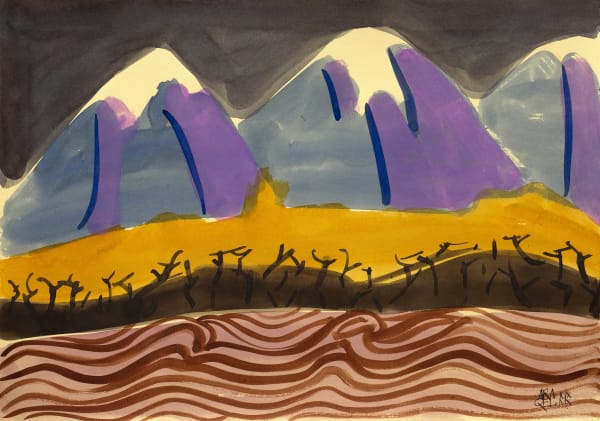AFTERWARDS: The Dissolution of Human Traces: Galeri 77
Past exhibition
Overview
Galeri 77 is hosting a very special exhibition between March 14 and May 5, bringing together the striking works of Karen Arakel, Roman Babakhanian, Mehmet Resul Kacar, Roman Kakoyan, David Martirosyan, Sergey Narazyan and Arthur Tonakanyan from its artist portfolio. “Afterwards: The Dissolution of Human Traces” is an exhibition that explores the complex and exploitative relationship between nature and humans and depicts the journey of the disappearance of human footprint. Through thought-provoking artworks and immersive images, it is an invitation to reassess our relationship with nature, our profound impact on the delicate balance of our planet’s ecosystem, and our role as inhabitants of the Earth. A contemplative experience to imagine a world where humans no longer exist, explore the possible outcomes, and reflect on our role in shaping nature’s destiny.
Today, there is more than one way to communicate the urgency of adopting sustainable practices and protecting the biodiversity that allows all life to continue in delicate balance. “Afterwards: The Dissolution of Human Traces” chooses to do so not by shouting and showing potential dangers as a threat, but rather as a memoir or a biography of nature through experiences. Through the works in the selection, we see the traces of civilization and what people have left behind. The exhibition presents us with snapshots of the lives of scraps, ruins and remnants that will not be able to mix with nature for thousands of years; then we go even further to a time when the planet we live in reclaims what belongs to it, a time that humanity will probably never experience. To the advanced stages of nature’s self-healing process, thousands of years after human civilization, a utopia, a dream...
Where we see a lack of human figures amongst the works in the exhibition, we see a cumulative reflection of human hubris, ambition, and actions. This selection of mostly landscapes is at times dark, dystopian, and full of humanity’s footprints, but at other times vibrant, colorful, and depicting a utopia that has regained its former might. Nature on one side, man on the other and an amalgam of the two.
The exhibition brings together the reason for the future or alternative reality it wants to describe under three main concepts: industrialization, consumer society and anthropocentrism.
The rise of industrialization and the accompanying ideology of human progress and economic growth at all costs, is one of the major causes of human’s exploitation of nature. The 18th century industrial revolution, especially in the second half of the 1900s brought significant advances in technology, manufacturing and transportation, and while it had many positive impacts on human society, it also led to the exploitation of natural resources on an unprecedented scale. The focus on production and profit maximization has often overshadowed concerns about environmental sustainability, leading to practices that damage ecosystems and deplete natural resources.
Another factor that emerged with the rise of industrialization is the consumer society structure that started to form in the 20th century and spread to many parts of the world in a short time. In order to realize the consumption habits that emerged simultaneously with the accelerated production, the act of consumption was associated with the idea that personal happiness and social status depended on material assets and was constantly encouraged through advertising and marketing tools.
Finally, Anthropocentrism, the belief that humans are the center of the universe or the most important beings, has also played a role. Instead of recognizing the value of ecosystems and the interconnectedness of all living beings, this ideology leads to the perception that nature exists solely for human use and exploitation. According to Aristotle, nature was created specifically for the needs of humans, who have the right to use all the resources they find. In his biological studies, he distinguishes between three types of souls: First, the nutritive (vegetative) soul, which is concerned with the growth, nourishment and reproduction of an organism; second, the sensitive (animal) soul, which is associated with animals and humans and includes the faculties of perception and sensation; and lastly, the rational soul, which is unique to humans and is associated with higher cognitive functions, reason and intelligence.
When this idea of spiritual superiority that distinguishes humans from other living beings was supported by Descartes in the 17th century with the idea that plants and animals are not life forms but inanimate objects that work like a complex clockwork, human hegemony gained even more momentum. Given the superiority of the human race over animals and plants, which possesses all three kinds of souls mentioned by Aristotle, nature was completely ignored without any ethical concern for the welfare of anything other than human life. Unlike the reality in which we live, the exhibition contains only these two mechanized spirits. A clarity, calmness, and tranquility reigns, free from the dominating elements.
What we see in the exhibition is the possibility of a world that was not created for humans; in fact, it is a dream. We are looking at a dream that Nature and the Earth are having. We see a slumbering life, the nightmares and dreams of the Earth come together here. The works seem to depict the reality of the world we live in, but that is not the case, at least not yet. This is our chance to enter the garden of Earth’s desires. These are works depicting an invisible war being fought by a planet’s white blood cells, and its healing process. The therapeutic process, the steps it takes to heal from the traumas.
Works
-
 David Martirosyan, Khustup, 2023
David Martirosyan, Khustup, 2023 -
 David Martirosyan, İsimsiz / Untitled, 2020
David Martirosyan, İsimsiz / Untitled, 2020 -
 David Martirosyan, Şubat / February, 2023
David Martirosyan, Şubat / February, 2023 -
 David Martirosyan, Kasım Güneşi / November Sun, 2023
David Martirosyan, Kasım Güneşi / November Sun, 2023
-
 Mehmet Resul Kaçar, İsimsiz / Untitled, 2023
Mehmet Resul Kaçar, İsimsiz / Untitled, 2023 -
 Mehmet Resul Kaçar, Nuşa Ağanın Köyü Xarbetto / Village of Nusha Agha Xarbetto, 2023
Mehmet Resul Kaçar, Nuşa Ağanın Köyü Xarbetto / Village of Nusha Agha Xarbetto, 2023 -
 Roman Babakhanian, Sevan'da Sonbahar / Autumn in Sevan, 2021
Roman Babakhanian, Sevan'da Sonbahar / Autumn in Sevan, 2021 -
 Roman Babakhanian, Sevan'da Sonbahar - Kasım Bulutları II / Autumn in Sevan - November Clouds II, 2021
Roman Babakhanian, Sevan'da Sonbahar - Kasım Bulutları II / Autumn in Sevan - November Clouds II, 2021
-
 Roman Kakoyan, Ayçiçeği Muhafızı / Guardian of Sunflowers, 2023
Roman Kakoyan, Ayçiçeği Muhafızı / Guardian of Sunflowers, 2023 -
 Roman Kakoyan, Koridor N2 / Corridor N2, 2023
Roman Kakoyan, Koridor N2 / Corridor N2, 2023 -
 Roman Kakoyan, Koridor N3 / Corridor N3, 2023
Roman Kakoyan, Koridor N3 / Corridor N3, 2023 -
 Arthur Tonakanyan, Kenar Mahalle / Suburb, 2022
Arthur Tonakanyan, Kenar Mahalle / Suburb, 2022
-
 Arthur Tonakanyan, Terk Edilmiş Köy / Abandoned Village, 2023
Arthur Tonakanyan, Terk Edilmiş Köy / Abandoned Village, 2023 -
 Arthur Tonakanyan, Harap Bahçe / Ruined Garden, 2023
Arthur Tonakanyan, Harap Bahçe / Ruined Garden, 2023 -
 Sergey Narazyan, Moskvich, 2020
Sergey Narazyan, Moskvich, 2020 -
 Sergey Narazyan, Yaşlı Boğa / Old Bull, 2020
Sergey Narazyan, Yaşlı Boğa / Old Bull, 2020
Installation Views







